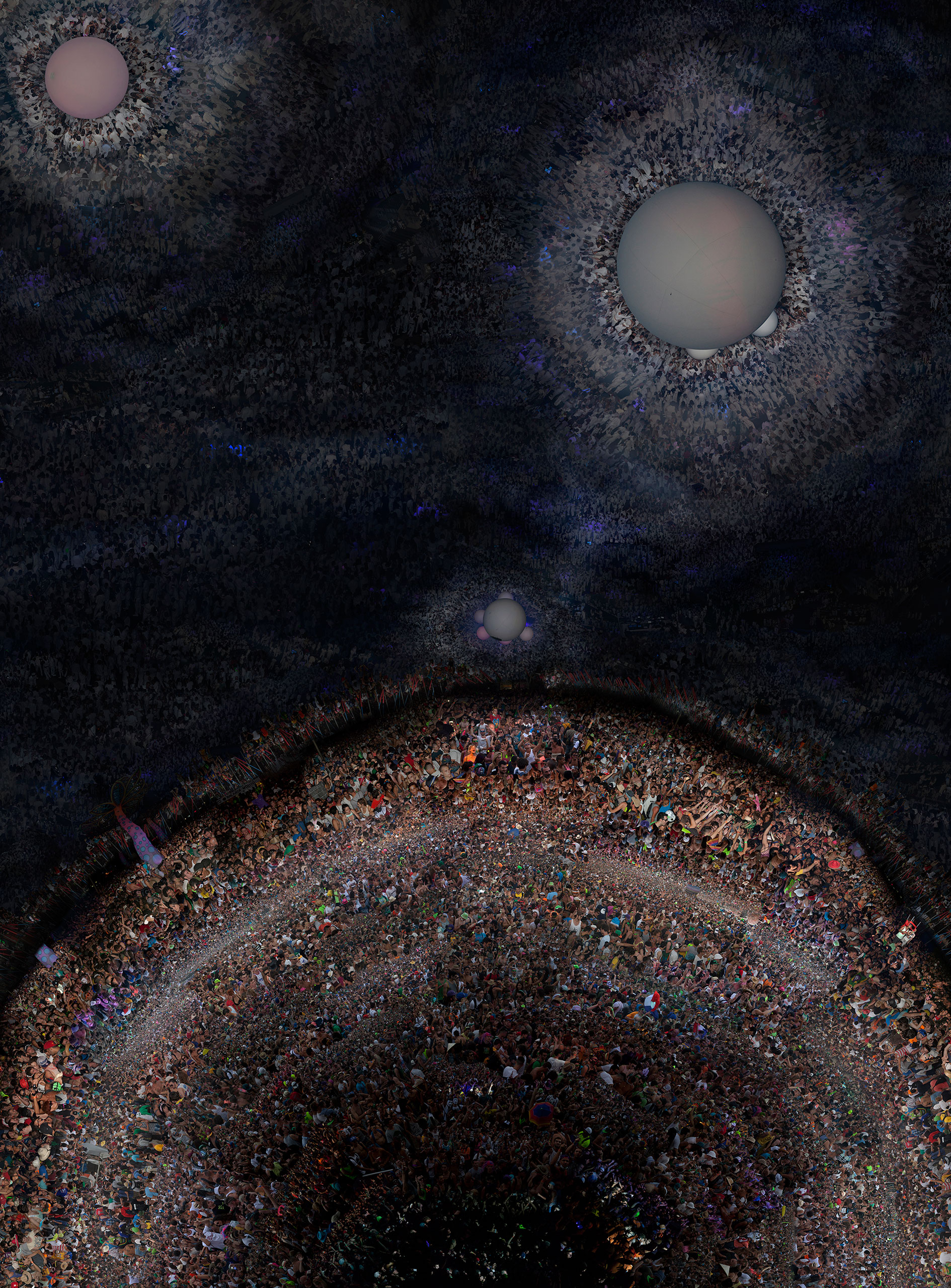
Imagine making a photograph in the same way that Girl Talk makes a track – mashing up different songs from different eras and genres, morphing and flowing into each other seamlessly, retaining their own unique sounds but aggregating into something strange and spectacular in layer upon layer upon layer. Felix R. Cid’s images of macro electronic music festivals are that photographic mash up.
Cid, a Spanish photographer, resembles a human whirlwind with the combined energy and joie de vivre of the hundreds of party-goers packed into one of his massive photo collages. He speaks 10,000 miles a minute, his hair wild and appropriately windblown, with equal facility on classical painting, photo history, and political theory. His collages, with the exception of two which he calls ‘purists’ (slides 3 and 6), incorporate hundreds of images taken from a number of festivals in several different countries. They are at once expressions of a collective energy and of individual experiences.
Over several months in 2014 Cid traveled around the world photographing festivals and raves, taking hundreds of pictures at each party. Back in the studio, he would choose pictures – of people, moments, landscapes, giant balloons – one by one from his stockpile, letting the collages take shape organically, sometimes stepping away from them for a month or two, sometimes scrapping the whole thing and starting from scratch. Each of the pictures are used exactly once. “When I use a picture I already don’t have an interest anymore in it,” Cid tells TIME. “The picture’s already in the bigger photograph. So I don’t repeat images. And I also don’t have the need because I shoot hundreds of them.”
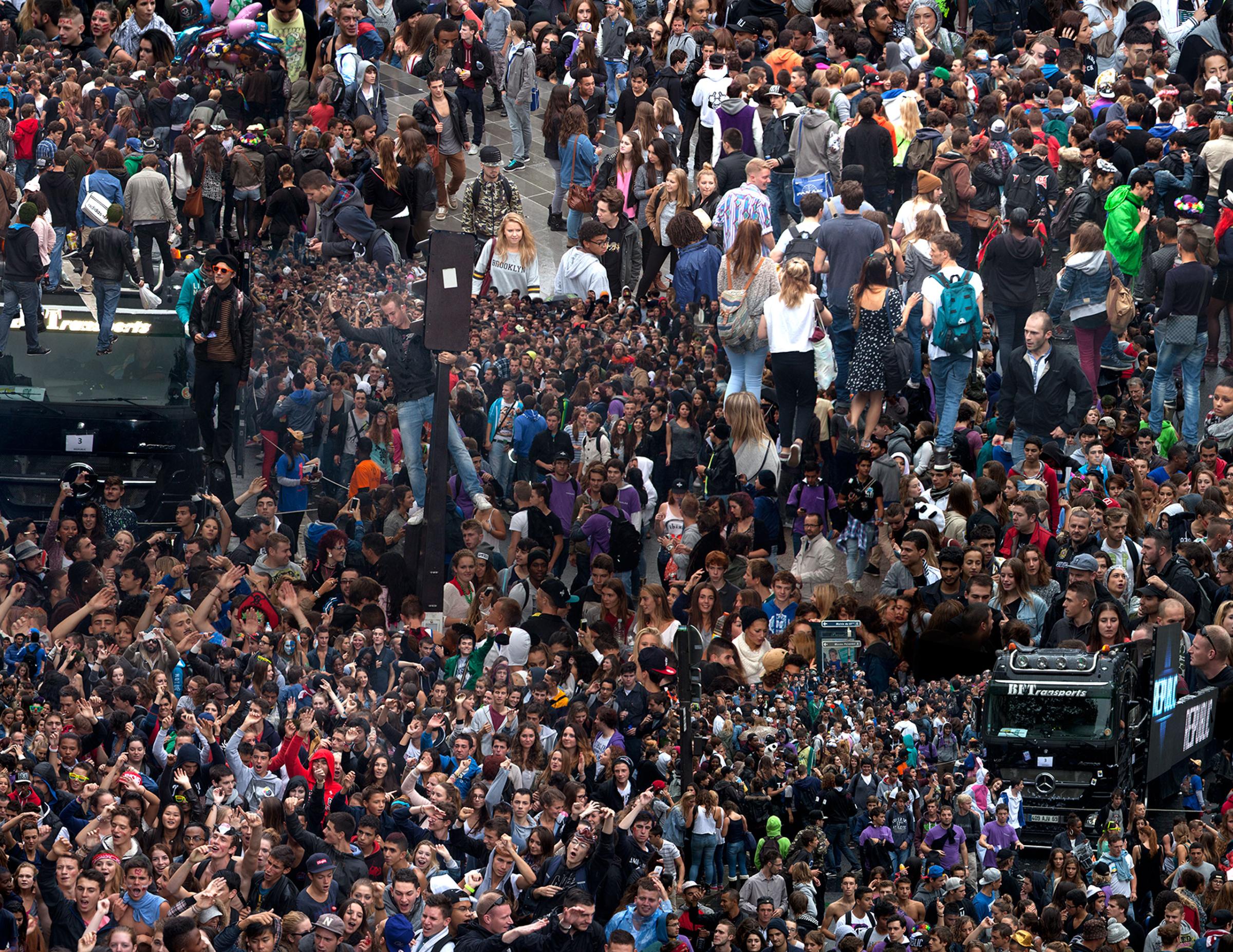
The photo collages, which bring to mind Andreas Gursky’s digitally-manipulated landscapes, become in a way data visualizations of human experience and expression – like pointillism on steroids. “I think of capitalism as the most popular religion of all time, and that this moment is about these kids who, especially now, communicate in platforms that are not physical at all…and then there is this moment of — almost of rage, of expression and gathering together and shredding.”
Cid exhibits the work as huge prints so that viewers can see every moment he’s woven into each piece. From a distance they read as undulating waves of color, or even static; up close they read like Bosch paintings with nearly infinite scenes of pain, pleasure, and unchecked bodily expression. “I love to see what’s happening, it’s beautiful,” he says. “You see the comedy and the drama of the human race at the same time right there.”
Felix R. Cid is a visual artist born in 1976 in Madrid, Spain. He graduated from a GS Program at ICP in 2005 and he holds an MFA in Photography from Yale University School of Art. He lives in Brooklyn.
Mia Tramz is a Multimedia Editor for TIME.com. Follow her on Twitter @miatramz.
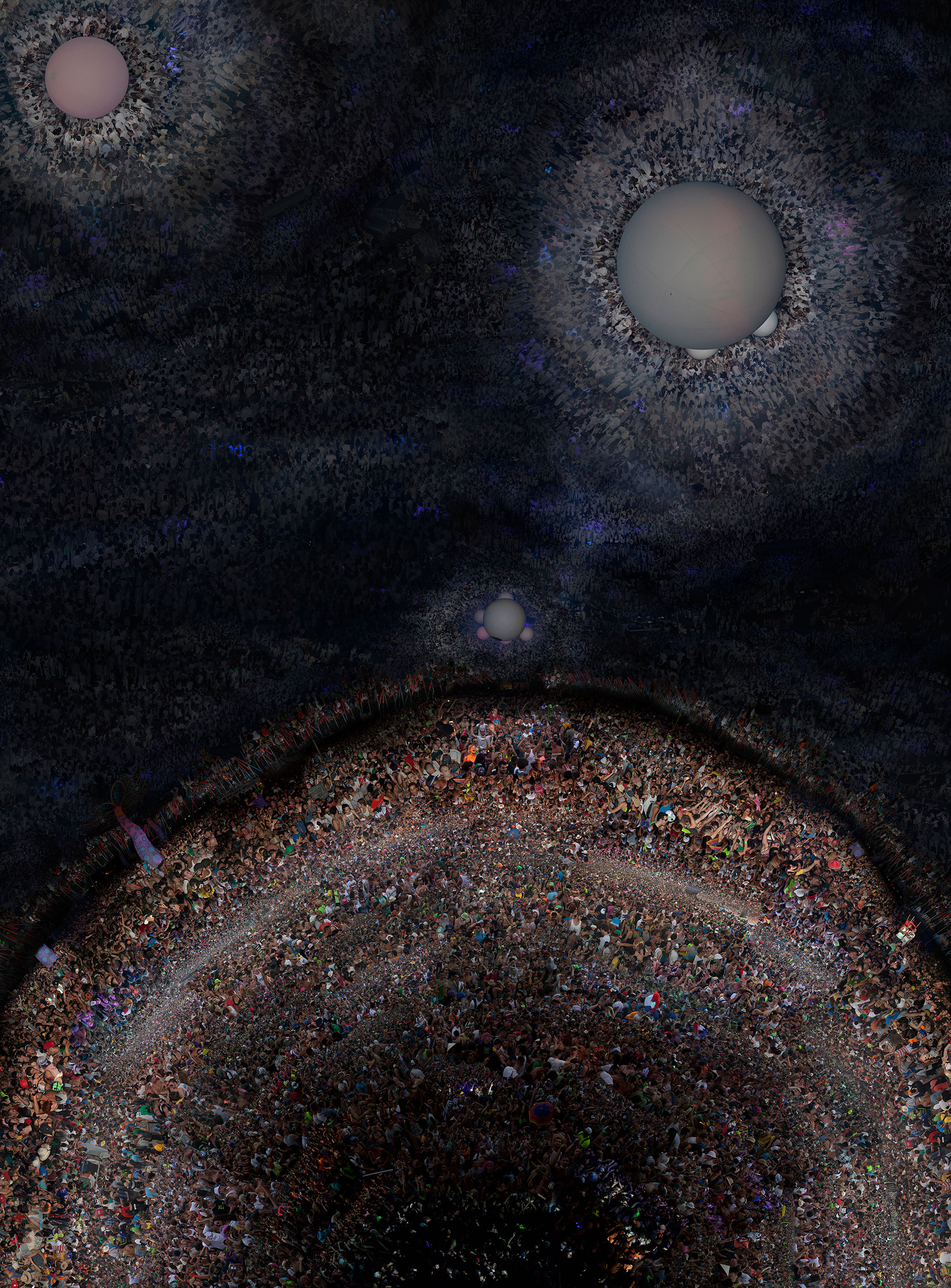


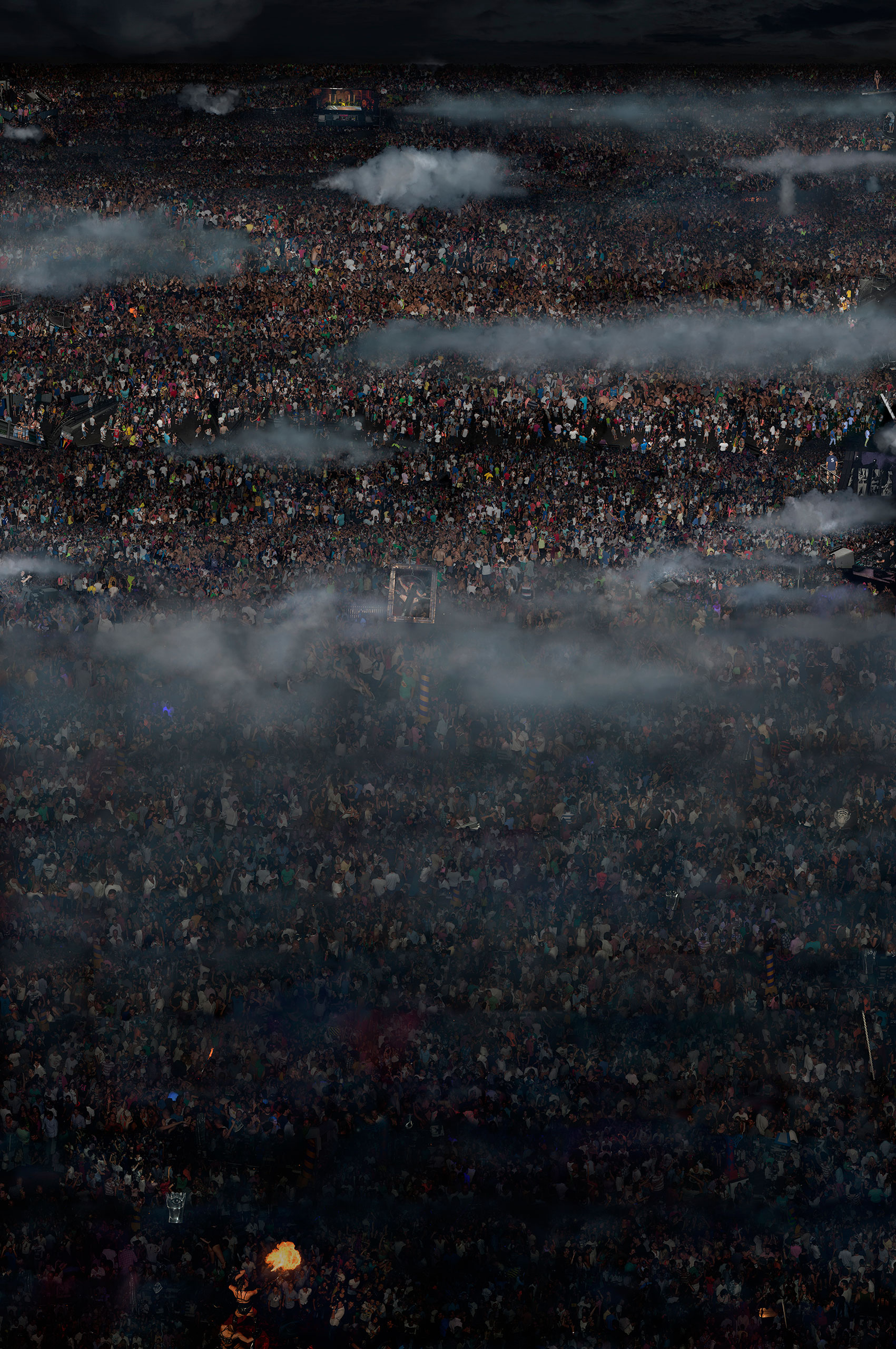
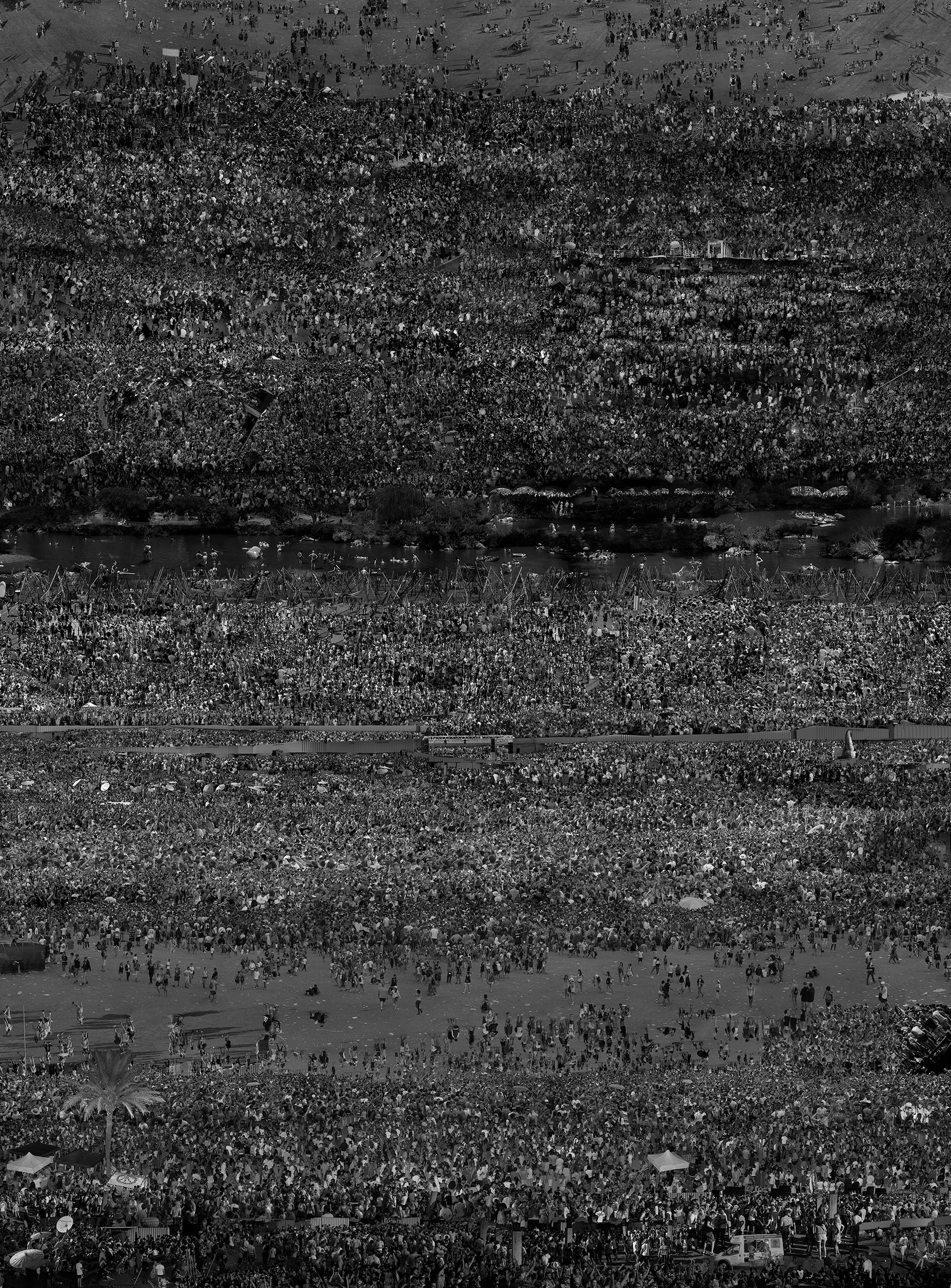

More Must-Reads from TIME
- Why Trump’s Message Worked on Latino Men
- What Trump’s Win Could Mean for Housing
- The 100 Must-Read Books of 2024
- Sleep Doctors Share the 1 Tip That’s Changed Their Lives
- Column: Let’s Bring Back Romance
- What It’s Like to Have Long COVID As a Kid
- FX’s Say Nothing Is the Must-Watch Political Thriller of 2024
- Merle Bombardieri Is Helping People Make the Baby Decision
Write to Mia Tramz at mia.tramz@time.com